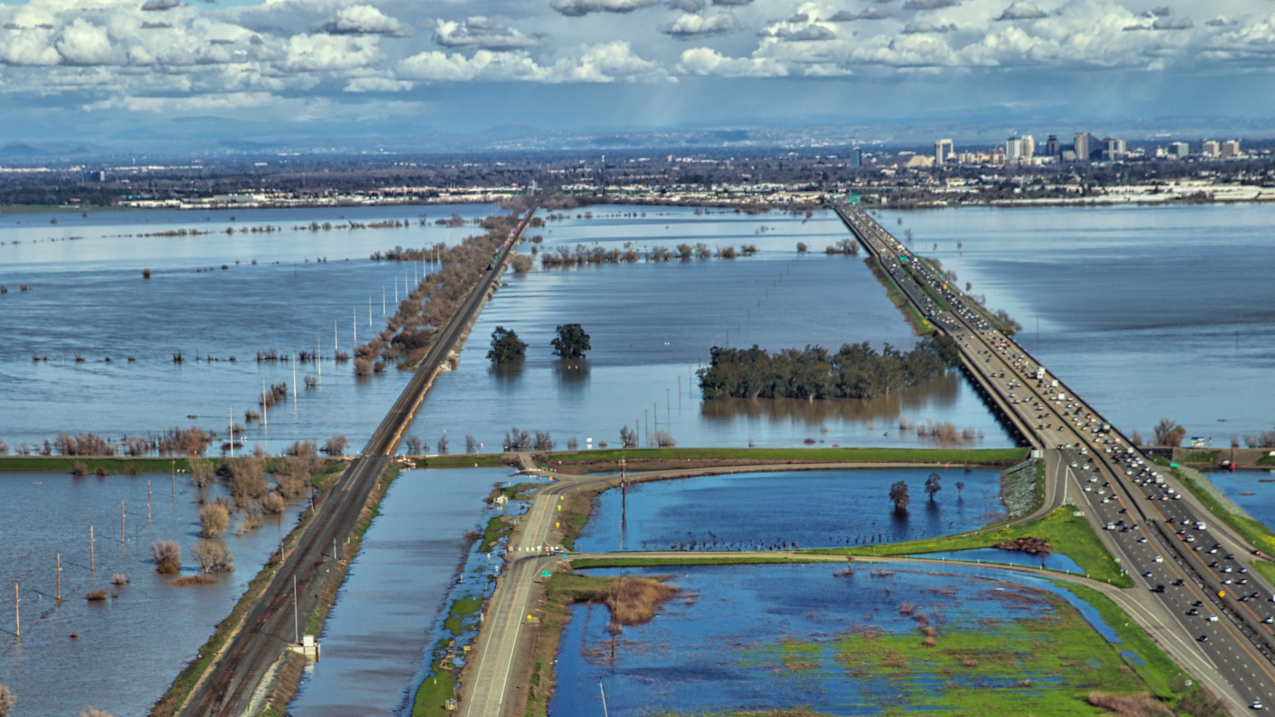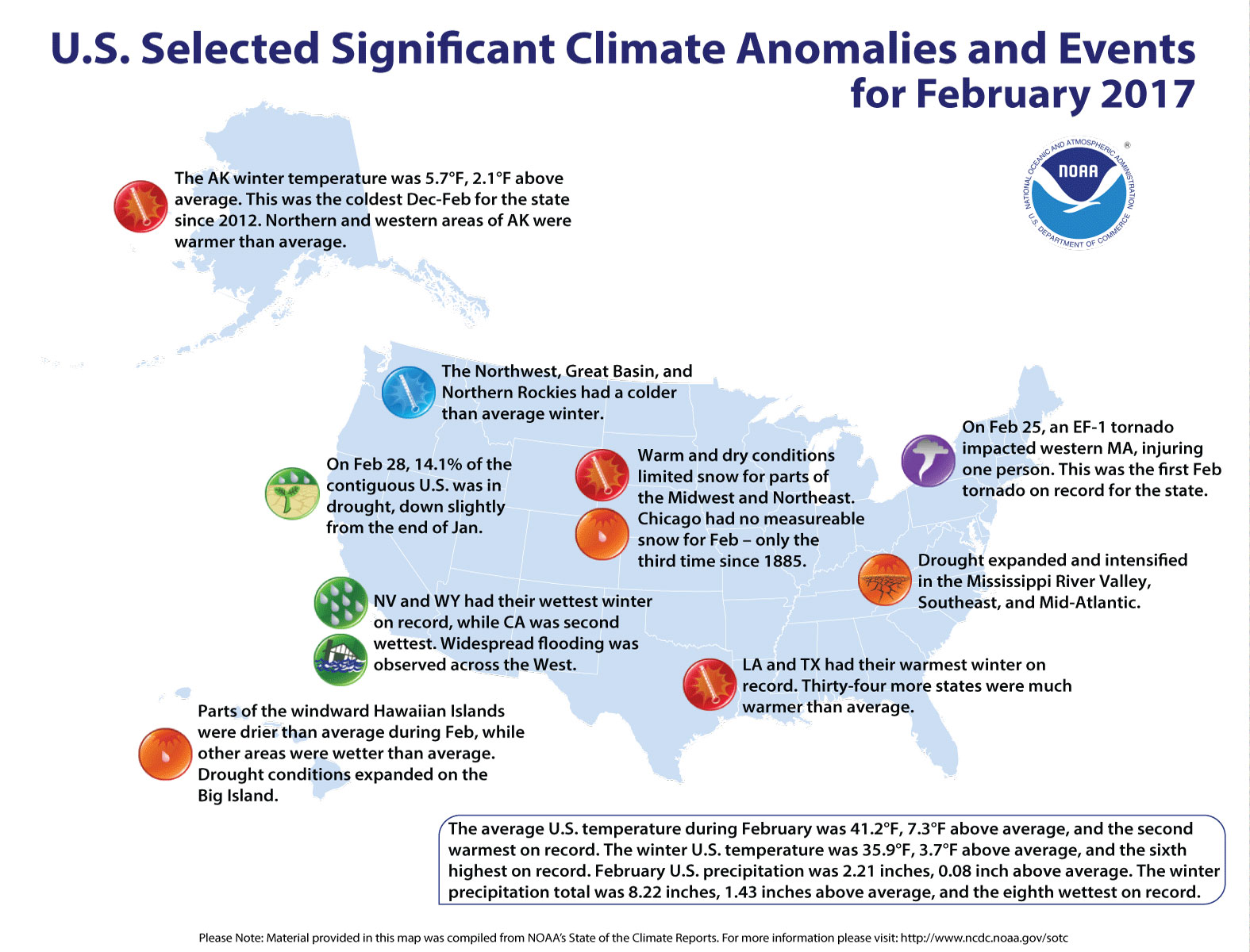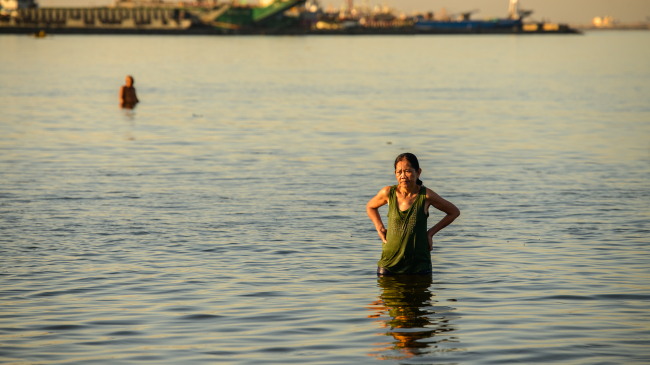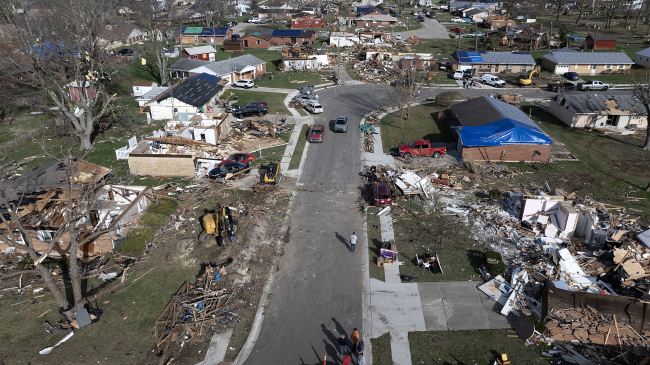Unseasonable warmth spanned 39 states; Western drought improved
In early February, Punxsutawney Phil, the nation's most famous groundhog, saw his shadow and “predicted” six more weeks of winter for the U.S. He couldn’t have been more wrong.

High water spills out of the Yolo flood bypass near Sacramento, February 23, 2017. California had its 2nd wettest winter on record, resulting in extensive flooding in many river valleys and record snowfall in mountain areas. (Image credit: Steve Matarano/USFWS via flickr at https://flic.kr/p/SesuzM)
In fact, an unseasonably warm February helped to boost winter temperatures for most areas east of the Rocky Mountains. And while parts of the West saw record precipitation, 10 states in the eastern half of the nation were much drier than average.
February by the numbers
Last month, the average contiguous U.S. temperature was 41.2 degrees F, 7.3 degrees above the 20th-century average. February ranked as the second warmest February in the 123-year period of record, according to scientists from NOAA’s National Centers for Environmental Information. Thirty-nine states from the Rockies to the East Coast were much warmer than average, and of these, 16 across the South, Midwest, Mid-Atlantic and Northeast experienced record warm temperatures.
The average precipitation total for February was 2.21 inches, 0.08 inch above the 20th-century average. Above-average precipitation across the West offset below-average precipitation in parts of the Midwest, the Southeast and along the East Coast.
Winter by the numbers
The average winter (December 2016-February 2017) temperature across the contiguous U.S. was 35.9 degrees F, 3.7 degrees above average, making it the sixth warmest winter on record. Thirty-six states were much warmer than average. The average winter precipitation total was 8.22 inches, 1.43 inches above average, ranking this winter as the eighth wettest on record.

Other notable climate events included:
-
Rare tornado in Northeast: On February 25, an EF-1 tornado impacted western Massachusetts, injuring one person. This was the first February tornado on record for the state.
-
Lack of snow for the Windy City: For only the third time on record, Chicago had no measureable snow in February.
-
Continued drought relief in the West: By the end of February, 14.1 percent of the contiguous U.S. was in drought, down 0.5 percent from the end of January. Heavy precipitation helped to improve the drought in parts of California and Nevada; however, long-term drought persists in Southern California.
-
Record warm winter in the South: Louisiana and Texas had their warmest winter on record, with temperatures 6.8 and 5.7 degrees F above average, respectively. Arkansas, Florida, Georgia, Kentucky, New Mexico, South Carolina, Tennessee and West Virginia each had their second warmest winter.
-
Alaska has another warm winter, but not a record-breaker: The average winter temperature in Alaska was 5.7 degrees F, 2.1 degrees above average. Northern and western areas of the state were warmer than average. Despite being above-average, this was Alaska’s coolest winter since 2012.
-
Wet winter in the West: Nevada and Wyoming had their wettest winter on record, with precipitation totals 194 percent and 179 percent of average, respectively. California had its second wettest winter with precipitation at 184 percent of average.
More: Find NOAA’s report and download images by visiting the NCEI website.
Media contacts
John Leslie, 301-713-0214
Brady Phillips, 202-482-2365



